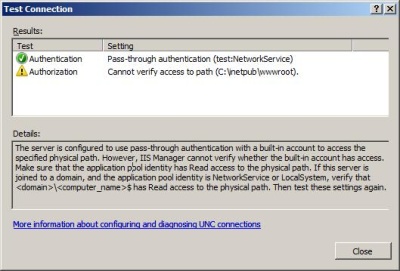1、高尔夫球具之三主件分别为球头、球杆与握把。
2、球头(Head):系球具组合中最重要的部份,包括铁头(Iron)、木头(Wood)与推杆(Putter)。
3、球杆(Shaft):包含铁杆(Seet shaft)及石墨球(Graphte shaft)。
4、握把(Grip):组合中最容易被忽视的,包含真皮、合成皮与橡胶三种材质。
|
Backweight(ing)
|
后重
|
为使重心 (Center of gravity) 后移, 于木杆球头( Wood Head )背部增加重量, 此加重物称为后重。 |
|
Biadelength
|
前刃长度
|
铁杆球杆 (Iron head) 最前端至跟部 (Hell) 之弯曲处,其长度称之。 |
|
Boring
|
颈孔
|
指球头颈部 (Neck) 之孔,装配 (Assembly) 时, 供球杆 (Sahft) 插入之用。 |
|
Bounce
(or Inversion) |
翘角
|
当铁杆球头平置于打击位置时, 其底部 (Sole) 之前缘比后缘高。 |
|
Bulge
(or Hopizontal face) |
水平弧形面
|
木杆球头面部 (Face) 呈水平之弧线。 |
|
Butt
|
大端或粗端
|
指球杆较粗的那一端。 |
|
Camber
|
圆弧底
|
指铁杆球头底部,自前缘至后缘, 或趾部 (Toe) 至跟部,其圆弧称之, 又称为 Rocker Sole , Radiused Sole , 2 Way Sole & 4 Way Sole 。 |
|
Crown
|
顶部
|
指木杆球头最上方有弧度之区域。 |
|
Decals
|
水标
|
指贴印于球头表面之字体或图案。 |
|
Deep Face
|
高打击或高面仔
|
指木杆球头面部高于 15/8 者。 |
|
Effective Loft
(Also Real Loft) |
有效倾角
|
指木杆球具,当面角 (Face Angel) 为正 (Square 0 度 ) 时,其倾角之角度。 |
|
Face
|
打击面
|
指木杆或铁杆球头击球部位。 |
|
Face Centerline
|
面部中心线
|
过面部与底线 (Sole Line) 垂直之线。 |
|
Face Depth
|
面高
|
指球头打击面之高度,一般分为低面仔、 普通打击面和高面仔。 |
|
Face Angel
|
面角
|
指目标线 (Target Line) 与打击面所构成之角度。 |
|
Face Progression
|
杆心面距
|
指球头打击面之最端至杆中心线 (Shaft Centerline) 之距离。 |
|
Ferrule
|
小胶套
|
指安装于球头杆端与球杆衔接处,使之平顺之物。 |
|
Forging
|
锻造
|
球头制造方式次一种,其材质较软。 |
|
Graphite
|
石墨
|
球头材质之一种,树脂 (Resin) 中含有碳纤维 (Carbglass) 。 |
|
Graphie Compostte
|
石墨复合材料
|
石墨材料中除有碳纤维外,还含有其它纤维, 如玻纤(Fiberglass) 。 |
|
Ground Line
|
地平线
|
一条平直之底线。 |
|
Head Width
|
球头宽度
|
指球头自前缘至后缘之距离。 |
|
Heel
|
跟部
|
指球头颈部与底部之连接处。 |
|
Heel/Toe Weigitting
|
跟 / 趾部重量
|
指球头跟部与趾部之重量分配,用以影响击球中心。 |
|
Hosel
|
杆部
|
指球头与球杆之连接处,颈部含于杆部之中。 |
|
Insert(or Inlay)
|
面板
|
镶入面部,以增加击球时承受撞击力之物。 |
|
Investment Casting
|
精密铸造
|
亦称脱腊法 (Lost Wax) ,是球头制造方式之一种, 其材质有 431、304(18-8),17-4PH,铜合金等多种。 |
|
Laminated
|
合板
|
一种生产木杆球头之材质。 |
|
Length-club
|
球具长度
|
亦称(Club Length),指自球头跟部至握把弧间之长度。 |
|
Lie
|
仰角
|
杆中心线与垂直于面中心线之地线, 两线所构成之角度, 仰角太大会造成翘头(Upright), 太小会造成低头 (Flat) 。 |
|
Loet
|
倾角
|
杆中心线与面中心线之间,两线所构所之角度。 |
|
Master
|
母模
|
制作球头时,最先完成之模型。 |
|
Neck
|
颈部
|
杆部与球头木体之连接处。 |
|
Offset
|
杆边面距
|
指头打击面之最前端至杆边之距离。 |
|
Preweter Weighting
|
外围重量
|
指球头重量特别分布于外围, 以扩前其甜蜜区(Sweetspot) 。 |
|
F…Simmon
|
柿木
|
最传统之木杆球头材质。 |
|
Roll
(or Vertical Face) |
垂直弧形面
|
木杆球头面部呈垂直之弧形线。 |
|
Scoop(or Dig)
|
挖角
|
当铁杆球头平置于打击位置时,其底部之后缘比前缘高。 |
|
Set-Makeup
|
球具组
|
根据 USGA 规定,一套球具不得超出 14 支球杆。 |
|
Shaft Flex
|
球杆弹性度
|
根据弯曲仪,可测出球杆之弹性度, 一般可分为X ( 超硬 )、S ( 硬 ) 、 R (一般)、A(软)、L(女用) 等五级。 |
|
Shaft Frequnce
|
球杆震频率
|
根据震动测定仪,可测出其震动频率, CPN 为其单位。 |
|
Shallow Face
|
低打击面或低面仔
|
指木杆球头面部低于 11/8 者。 |
|
Slope Angle
|
斜角
|
指铁杆球头底线与刃部顶线,所构成之夹角。 |
|
Sole
|
底部
|
指球头与地面接触之部位。 |
|
Sole Angel
|
底角
|
指球头底部与地线所构成之夹角含翘角与挖角。 |
|
Sole Line
|
底线
|
指球头底部与地面接触,所产生之线。 |
|
Soleplate
|
底板
|
指球头底部之金属防护片,有加重及防磨损之作用。 |
|
Swing Weighting
|
挥杆重量
|
指测量挥杆时,其分配在球杆上之重量。 |
|
Target Line
|
目标线
|
指球具至目标开的一条假想线。 |
|
Tip
|
小端或细端
|
球杆较细的那一端。 |
|
Toe
|
趾部
|
球头之最前端。 |
|
Top Line
|
刃部顶线
|
球头面部上端与背上端之交会处。 |
|
Torque
|
扭力
|
挥杆时,对球杆造成之扭转力。 |
|
Trajectory
|
弹道
|
球被击出后,其飞行经过处。 |
|
Vise Pads
|
护套
|
保护木杆球头之套子。 |
|
Whhpping
|
绕线
|
木杆球头颈部通常会用尼龙线予缠绕, 以增强颈部之抗力弹性。 |
|
P SH
|
磨光指球头表面
之磨光程度 |
Mirror Finsh 亮光 Satin Finish 缎光 Wbration Finsh 震光 |
|
Hosel Shape
|
杆状指杆端之型状
|
Even 平杆: Wtth Eerrule Round 圆杆: No Ferrule Slope 斜杆: No Ferrule Whipping 绕线: Wood Head Only |










